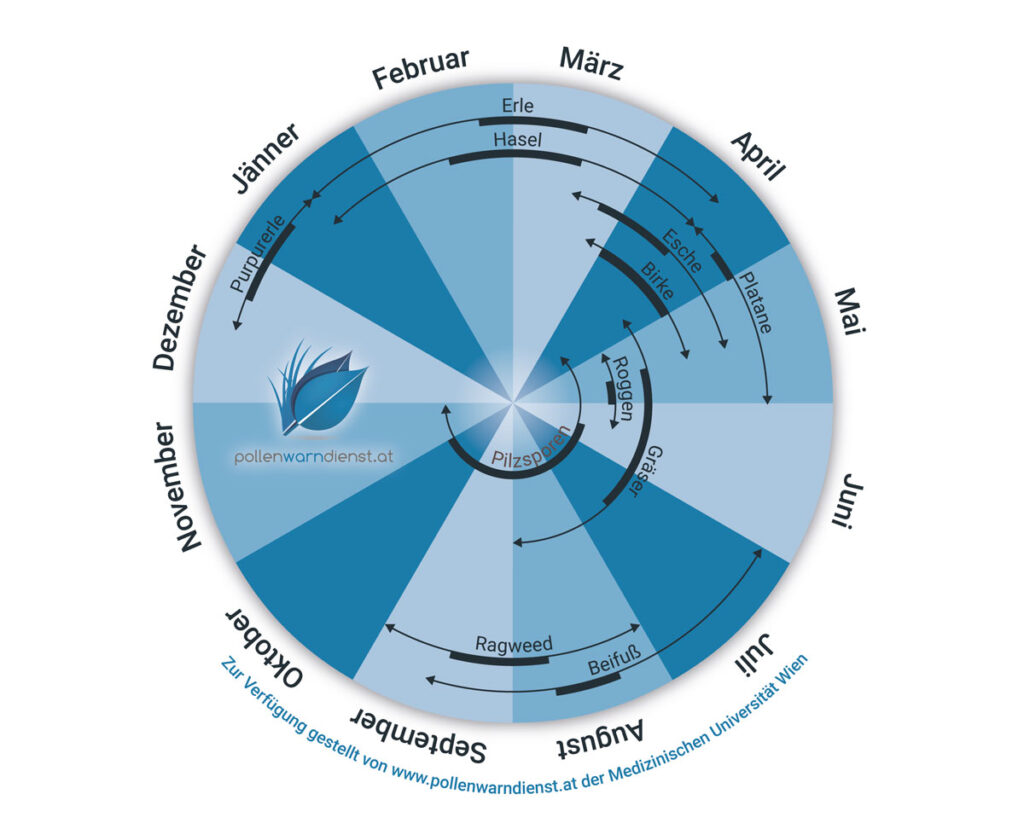
The warm season begins and most people are increasingly tempted to go outside: walking in the woods or fields, having a picnic, going to the outdoor pool – that sounds like a relaxing summer’s day! But exactly such things can be torture for allergy sufferers. What can you do to finally put an end to the runny nose and itchy eyes?
How do I recognize an allergic reaction?
In order to be able to fight the allergy, one must first understand what it does in the body and what triggers it is.
Basically, an allergic reaction is an overreaction of the immune system to actually harmless substances. Typical representatives here are bee pollen or grasses, which are in the air especially in the warm season. But people can also develop an allergy to mold, dust or even animal hair – which is particularly tragic when the pet they have loved for years suddenly causes the typical inflammatory reactions. In addition, food allergies are becoming more common – for example to wheat products or fruit acid. They usually manifest themselves in the form of indigestion and abdominal pain. One of the particularly dangerous allergies is that against insecticides, because they often cause an extreme reaction in the immune system. In the long term, allergies can lead to asthma, a chronic, inflammatory lung disease.
Why people are allergic to certain substances has not yet been finally clarified. A hereditary predisposition, a humid living environment, active and passive tobacco smoking, but also a possibly overly hygienic way of life through which the contact of the immune system with many substances is fundamentally more likely, are under suspicion avoided – which the theory suggests will cause an overreaction later in life.
Typical allergy symptoms include:
- A runny nose and the feeling of not being able to breathe freely
- Itching and swelling around the eye and the urge to rub your eyes
- Itchy edema, i.e. water-filled “wheals”, especially after skin contact with the allergen
- With food allergies also abdominal pain or diarrhea
- In extreme cases, shortness of breath or shortness of breath
The diagnosis is usually made using a so-called prick test, if necessary in connection with a blood test in the laboratory. The surface of the skin on the forearm is lightly scratched and a solution containing the suspected allergen is sprinkled over it. With a positive reaction, redness and swelling are usually seen within a few minutes, which can cause severe itching.
In principle, there are two ways to combat allergic reactions: Either you treat the symptoms or the allergy itself. Pharmacies are full of over-the-counter preparations in the form of eye drops, sprays, ointments or tablets that are supposed to suppress the allergic reaction in the whole body or in specific areas of the eye, nose or skin. Many of them help at the moment of contact with the allergen – for example the nasal spray, which you can use during a walk and which is intended to clear the upper respiratory tract directly. Other active ingredients are more designed to long-term lead to a weakened allergic reaction and are therefore permanently administered – for example cortisone nasal sprays or eye drops. People with severe or frequent allergies may benefit from taking an antihistamine by mouth, a pill that suppresses the allergic reaction throughout the body.
How do I get rid of my allergy permanently?
Another way to get rid of allergy symptoms is to “get to the root”. The principle: The body should get used to the allergy-causing substances and thus react less and less strongly over time. But how does it work?
The process of getting used to a substance by slowly increasing the dose and getting used to the immune system is called hyposensitization – a long word. Hypo comes from ancient Greek and means something like “below” or “low”. In principle, it is about desensitizing the immune system and making it less sensitive – i.e. suppressing the allergic reaction. The term “Specific immunotherapy” is used for desensitization because it is mostly carried out against individual allergens – usually the one that causes the strongest allergic reaction .
Here, too, different methods are used: There is the possibility of training your immune system by having the allergy-triggering substance administered to you regularly. Like all long-term or systemic approaches, this treatment must be initiated by a licensed doctor.
There are two ways hyposensitization can be done:
- By under the skin (subcutaneous)
- By tablet, placed under the tongue until dissolved (sublingual)
However, there is often a combination of different ways, so that, for example, injection therapy is started and those affected continue at home with the help of tablets from a certain point treat. It is important to stay on the ball continuously so that the body gets used to the allergy-causing substance over time.
The great advantage of hyposensitization is that it not only fights the symptoms – but can actually get to the root of an allergy and stop it. However, interested allergy sufferers must have staying power – because three to five years for a therapy is not uncommon.
By the way: In the case of pollen allergies, starting a desensitization in winter makes the most sense – because then no pollen fly, which would put additional strain on the body. Allergies to substances such as house dust mites, on the other hand, can and should be carried out all year round, because the allergy trigger is also a constant burden.
Sources:
- Bencard Allergie: Allergie: Ursachen und Behandlung. Ein Ratgeber für Allergiepatienten. Retrieved via https://www.bencard.com/service-center/ratgeber-infobroschueren/ on April 1, 2022
- Vorarlberg.orf.at, 2022: Allergien im Vormarsch – Was man dagegen tun kann. Retrieved via https://vorarlberg.orf.at/stories/3149247/ on April 1, 2022